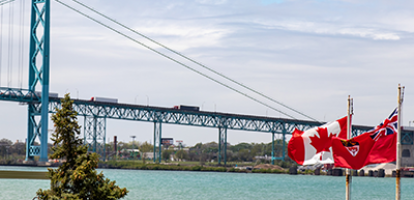To: Brian Jean, Alberta Minister of Energy and Minerals
From: Charles DeLand
Date: August 14, 2023
Re: A Nuclear Blueprint for Alberta
Fans of Canadian nuclear energy have much to root for these days. Two recent Ontario announcements, one about small modular reactors and one for a new large-scale project, indicate meaningful commitment to nuclear energy to meet rising demand. Along with hydro, nuclear power emits virtually zero greenhouse-gas emissions, and is foundational to meet federal emissions targets.
Albertans have a chance to learn from Ontario’s ambition – and your recent mandate letter from Premier Danielle Smith, presents a well-timed opportunity to do even more.
Among other things, it asks you to co-ordinate “with other provinces and the federal government to further explore and promote small and micro modular reactor technologies and pave the way for their use in oilsands operations and petrochemical production” and to work “with the Minister of Environment and Protected Areas, to develop and implement a regulatory framework for small modular reactor technology use in Alberta.”
Ontarians have enjoyed stable electricity from a traditional large-scale nuclear fleet for decades – one that still produces about 60 per cent of its power. Recognizing forecasts of growing demand, the Ontario government announced last month that Bruce Power would start work to determine feasibility of up to 4,800 megawatts of new nuclear generation on its current Lake Huron site.
In addition, the province said it is working with Ontario Power Generation (OPG) to start planning for and licensing a total of four small modular reactors (SMRs), with a total 1,200 MW output, at the Darlington nuclear site.
While both projects face lengthy permitting processes, all-too-certain cost-control challenges and many years before they produce power, the plans are an encouraging sign. As underlined in a recent C.D. Howe Institute study from John Richards and Christopher Mabry, nuclear is a stable source of reasonably priced emission-free electricity.
Alberta can gain from Ontario’s commitment. While Alberta’s wind- and solar-powered electricity generation investments continue to rise rapidly – a good thing, notwithstanding last week’s moratorium announcement – the province lacks much emissions-free power available on demand. The emissions produced in generating each unit of Alberta’s electricity dropped 44 per cent between 2005 and 2021 (mostly by moving to natural gas from coal), but its electricity sector still emits more than its provincial counterparts.
Alberta’s oilsands producers also burn a lot of natural gas to make the steam (and power) to extract the oil. The Pathways Alliance, an oilsands producer coalition, has identified exploring alternative power sources, such as SMRs, as a key means of reducing emissions. And a recent S&P Global report indicates SMRs can help the oil and gas sector reach Ottawa’s 2030 target for reducing its emissions to 42 percent below 2019 levels by 2040 (admittedly later than the government would like, but still better than by economy-damaging production cuts).
Alberta needs to get ready.
While nuclear technology is not a guaranteed solution (no SMRs have been built in Canada), Alberta should make a serious commitment to absorb knowledge from Ontario, federal regulators and technical experts from across the country. The province should establish a regulatory framework as quickly as possible, learning from Ontario’s wins and losses, since this will be a necessary foundation for any investment. Of course, it will also have to be tailored to fit Alberta’s competitive electricity generation market.
Nuclear critics are right to point out that projects often arrive behind schedule and over budget. Consumers and businesses should not be stuck with the consequences of avoidable failures. They, and governments such as Alberta’s, may therefore be encouraged that OPG says its refurbishment of four Darlington reactors is on track for 2026 – and on budget.
Alberta’s economic heft, energy-regulation experience and technically skilled workers could bring mutually beneficial support to provincial counterparts in conversations with federal counterparts. This would build on the coordinated efforts of Saskatchewan, New Brunswick, Ontario and Alberta to develop the Strategic Plan for the Deployment of Small Modular Reactors in 2022, which outlines work to be done in technological readiness, economics, waste management, and Indigenous and public engagement. It also identifies policy and regulatory framework clarity as a needed step for Alberta.
A more concentrated Alberta effort can help advance aligned interests with Saskatchewan – a major uranium producer. It may even help both provinces for Alberta to closely follow Saskatchewan’s commitment to explore the development and deployment of up to four SMRs, and learn from SaskPower’s design selection and its search for a site. If Alberta chooses, the province could also work to achieve other shared objectives, such as including nuclear in the federal Green Bond Framework, which conspicuously excludes it.
Building nuclear in Alberta is neither a foregone conclusion nor will it be easy. But the time for a bigger step is now. Working with provincial and federal partners, Alberta should establish a nuclear regulatory framework as quickly as possible.
Charles DeLand is the Calgary-based associate director, research at the C.D. Howe Institute.
To send a comment or leave feedback, email us at blog@cdhowe.org.
The views expressed here are those of the author. The C.D. Howe Institute does not take corporate positions on policy matters.
A version of this Memo first appeared in The Globe and Mail.





